School Education Chado ProgramGakko Chado
The origin of the School Education Chado Program (Gakko Chado) dates to the onset of the Meiji Restoration. Japan embarked on a movement to adopt western civilization and, consequently, the trend was to deny Japanese traditions and culture. Until the Meiji era, chado was not a widespread practice in Japanese society, and with the rise of the westernization movement, the 11th generation Urasenke iemoto, Gengensai, feared for chado’s future. Thinking that chado could be implemented in the new educational system, he initially managed to get girls’ schools to teach it. In Meiji 44 (1911), the first summer seminar to cultivate teachers for the Gakko Chado program was held at Urasenke, and to this day, intensive seminars are regularly held for this purpose at Urasenke.
The Urasenke Tankokai Federation has long been striving to nurture fine and upright youths through chado, following the policy set forth by the 15th generation iemoto, Hounsai. “From kindergarten through university” is the catchphrase for this. In 1973, the Chado Education Center was founded, and in 1978, in order to develop a solid program, the Gakko Chado Department was established at Urasenke Tankokai Headquarters, to provide general guidance for the program liaison council at each of the Tankokai chapters and regions.
Currently, there are 17 regional liaison councils for the program, covering an organization of 167 Tankokai chapter liaison councils. The number of chado instructors registered in the program is approximately 6,000. They are responsible for chado club programs or classes at more than 5,500 schools nationwide, from kindergarten through university. Students involved in the Gakko Chado program also participate in international exchange projects and volunteer activities for their local communities, and so this program of the Urasenke Tankokai Federation has a wide reputation.
Moreover, there are many schools at which “real experience” chado study time qualifies as comprehensive study time, and at which chado is a formal subject in the curriculum. Further expansion of the Gakko Chado program is expected.
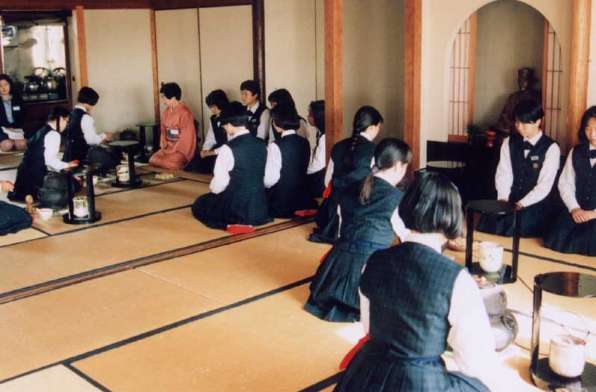
A high school chado class
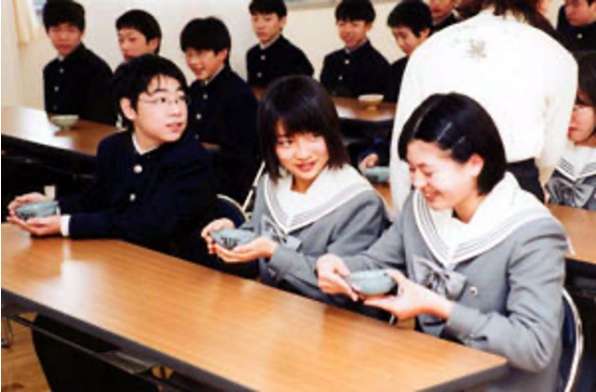
A junior high school
chado experience session
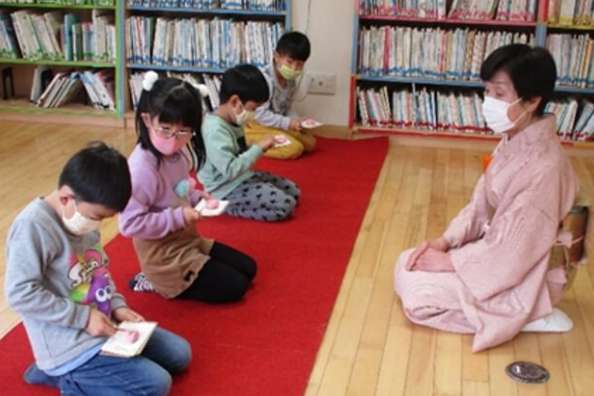
A kindergarten “tea play time”
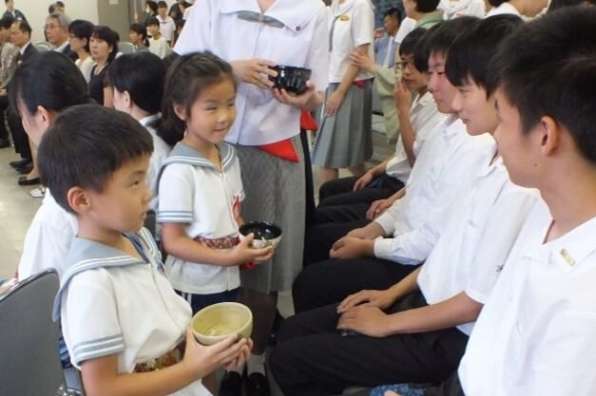
A Girls’ Day Festival tea gathering
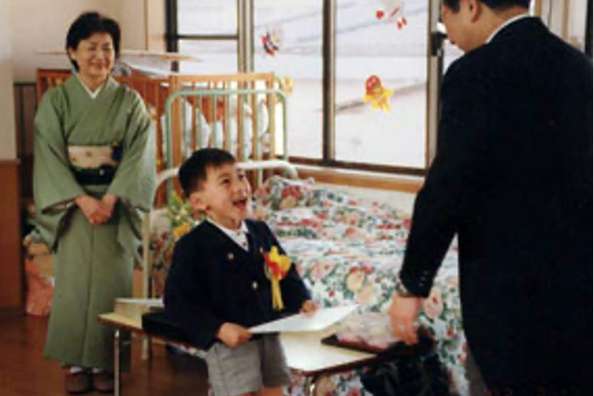
A kindergartener
is awarded a “certificate”
Main tasks of the Gakko Chado department
at Urasenke Tankokai Headquarters
- To provide data and introduce chado instructors to schools contemplating adoption of the Gakko Chado program
- To establish consultation rooms concerning the program
- To investigate the conditions of the program’s application, and collect and analyze relevant information
- To operate the program’s Designated Education Research School system
- To produce text books and teaching tools for the program
- To hold training seminars and such for the Gakko Chado instructors
- To invite students’ submittal of essays on their Gakko Chado experiences
- To produce certificates of encouragement for the students
- To hold Urasenke student seminars
- To distribute teaching materials and tools, and loan out audio-visual teaching materials
- To publicly honor deserving chado instructors in the program
- Other miscellaneous tasks
Main Activities of the Gakko Chado Liaison Council
- Introducing chado instructors to schools, etc.
- Holding events for the self-improvement of members
- Holding events for the members’ friendly exchange
- Holding study programs for the chado instructors, students, and children
- Providing guidance for chakai and study programs organized by the school students
- Other miscellaneous chado activities to contribute to school education


